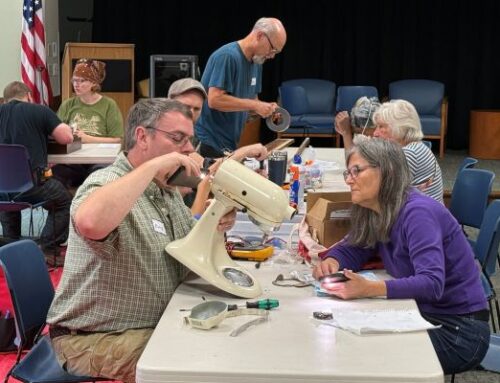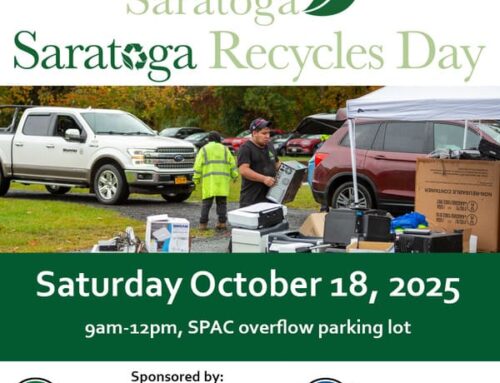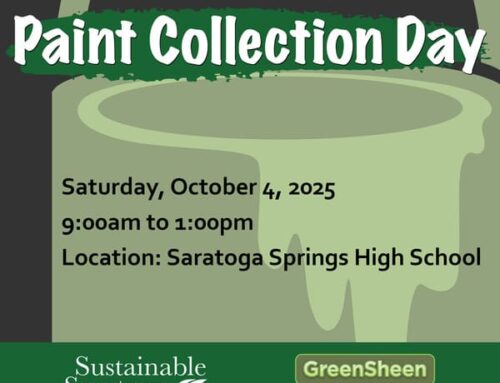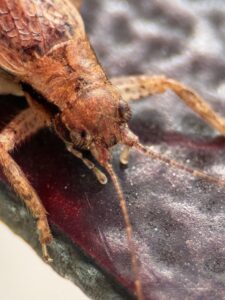
by Johanna Garrison
I noticed him bobbing in the water and knew he’d never make it; not by himself. It’d probably only taken a minute or two before the current had swept him far from the bank’s edge. I couldn’t leave him there, so I scooped his leaf into my left palm, figuring a one-handed doggy paddle across the Hudson could prove entertaining.
I’m no Trudy Ederle, first woman to cross the English Channel, but I’m a decent swimmer. Still, who chooses to doggy paddle other than dogs or five-year-olds? Poor guy, I didn’t want to freak him out. I had no choice but to move slowly, and was worried he’d try to leap off of my hand into the water. But he didn’t. He watched me watch him. I told him everything was going to be alright; I’d get there eventually. And please, don’t move. So, in between huffs and pants, I prattled on. How cute he was, did he have a family, was he a dad, maybe he was on the verge of starting a family, or maybe he wasn’t a male at all, but a female; oh excuse me, it’s hard to tell from this vantage point. I’m a human. Most of my species don’t see you, let alone understand you. Or your cousins. Or your cousins’ cousins. If only they knew how marvelous you are!
A few final paddles and, pant-pant, I made it. What a relief to be alone. It’d be kind of embarrassing for a breathless, middle-aged woman to emerge from the water carrying an insect on a leaf. And since an insect is pretty small, they’d most likely assume I was only carrying a leaf. “Uhh, you okay, lady?”
I crawled out, balancing with my right hand (which by now was pretty tired) and walked over the rocks to the flowering grasses. I gently set his wee life raft down and told him how lovely it was to have shared this river crossing, and that I would never forget him. He replied by hopping away.
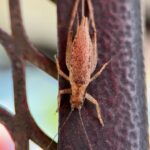 I felt grand. I’d saved a cricket. I stood tall, arms outstretched, and looked across the glorious expanse from which I’d paddled. So much life. Does one cricket matter? Does one bee, butterfly, wasp, spider, grasshopper, dragonfly, milkweed, turtle, chickadee, cat, dog, or horse matter?
I felt grand. I’d saved a cricket. I stood tall, arms outstretched, and looked across the glorious expanse from which I’d paddled. So much life. Does one cricket matter? Does one bee, butterfly, wasp, spider, grasshopper, dragonfly, milkweed, turtle, chickadee, cat, dog, or horse matter?
I’m often asked if I have pets. My answer is yes, thousands. And they’re all in my backyard. They either care for each other, or eat each other. Admittedly, the word pet connotes devotion, affection, and care. Do I snuggle with our great golden digger wasps? Well no, but I do gaze at them fondly and we respect our mutual boundaries. Which is a lot more than most humans can say for each other these days.
Don’t get me wrong. Doggies, kitties, ponies and bunnies all make incredible family members. I grew up with them. I also grew up in a world where we swatted, smashed, cursed, dismissed and poisoned a vast amount of wildlife that helps sustain us. How many times have we swiped down a hand to squash a bug? Or swished one away with a, “Piss off!” Because insects are not seen as charismatic like mammals or birds or even fish, they always get the short end of the stick.
The passing of the Endangered Species Act in 1973 marked the first time invertebrates (and plants) were given distinct federal protection. However, funding is dismally disproportionate to monies allocated for vertebrates. For example, a 2024 study in PNAS (Proceedings of the National Academy of Sciences) found that between 2005 and 2021 over $1.6 billion in conservation funds were assigned to vertebrates. Invertebrates and plants during that same period each received just 6.6% of funding ($129 million), despite making up the majority of listed species.
It’s pretty certain in today’s political climate that funding is not going to increase for either mammals or insects. So what can we do? A lot, actually. You don’t have to be a landscape designer, master gardener, or plant biologist. Lord knows, I’m none of these things. All you need to do is care. Biodiversity loss and climate change are existential crises that clamor for our attention. Many of you reading may already be unlawning, turning off exterior lights, and planting natives, and I am grateful. If you see an insect and think, what a cutie, you’re on your way. Or if you don’t have space for gardening, maybe you want to donate or get involved in one of the many pollinator initiatives across our region.
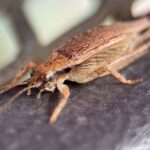 Back to my cricket. I still think he, or she, matters. Gardening for wildlife, native gardening, ecological gardening (whatever you want to call it), taught me to care about the “little things that run the world.” E.O. Wilson wasn’t exaggerating when he said we’d be lost without them. We need them. Far more than they need us.
Back to my cricket. I still think he, or she, matters. Gardening for wildlife, native gardening, ecological gardening (whatever you want to call it), taught me to care about the “little things that run the world.” E.O. Wilson wasn’t exaggerating when he said we’d be lost without them. We need them. Far more than they need us.
Learn more about national and local initiatives – the movement is growing!
https://homegrownnationalpark.org/
https://xerces.org/ — https://xerces.org/learn-about-invertebrates
https://sustainablesaratoga.org/projects/pollinators-and-native-plants/
https://sobroconservancy.org/
https://www.pitneymeadowscommunityfarm.org/
Curious about a male cricket’s mating prowess and testicle size? Yes, you heard me.
https://www.nationalgeographic.com/travel/article/130709-crickets-science-animals-audience-learning
Reasons behind our plummeting insect population:
https://www.pnas.org/doi/10.1073/pnas.2023989118
As I wrap up this piece, wherefore art thou, Romeos? In the garden, of course. I can hear about 300 of them chirping for their Juliets, and one, in particular, is stealing the show.
~~~~~~~~~~~~~~~~~~~~~~~~~~~~~~~~~~~~~~~~~~~~~~~~~~~~~~~~~~~~~~~~~~~~~
Johanna Garrison discovered wildlife gardening ten years ago and never looked back. She is an active volunteer for Sustainable Saratoga’s Pollinator Committee and a garden advisory member for SoBro Conservancy. Recently retired from teaching, Johanna hopes to inspire others about the wondrous interconnection between insects and native plants.

